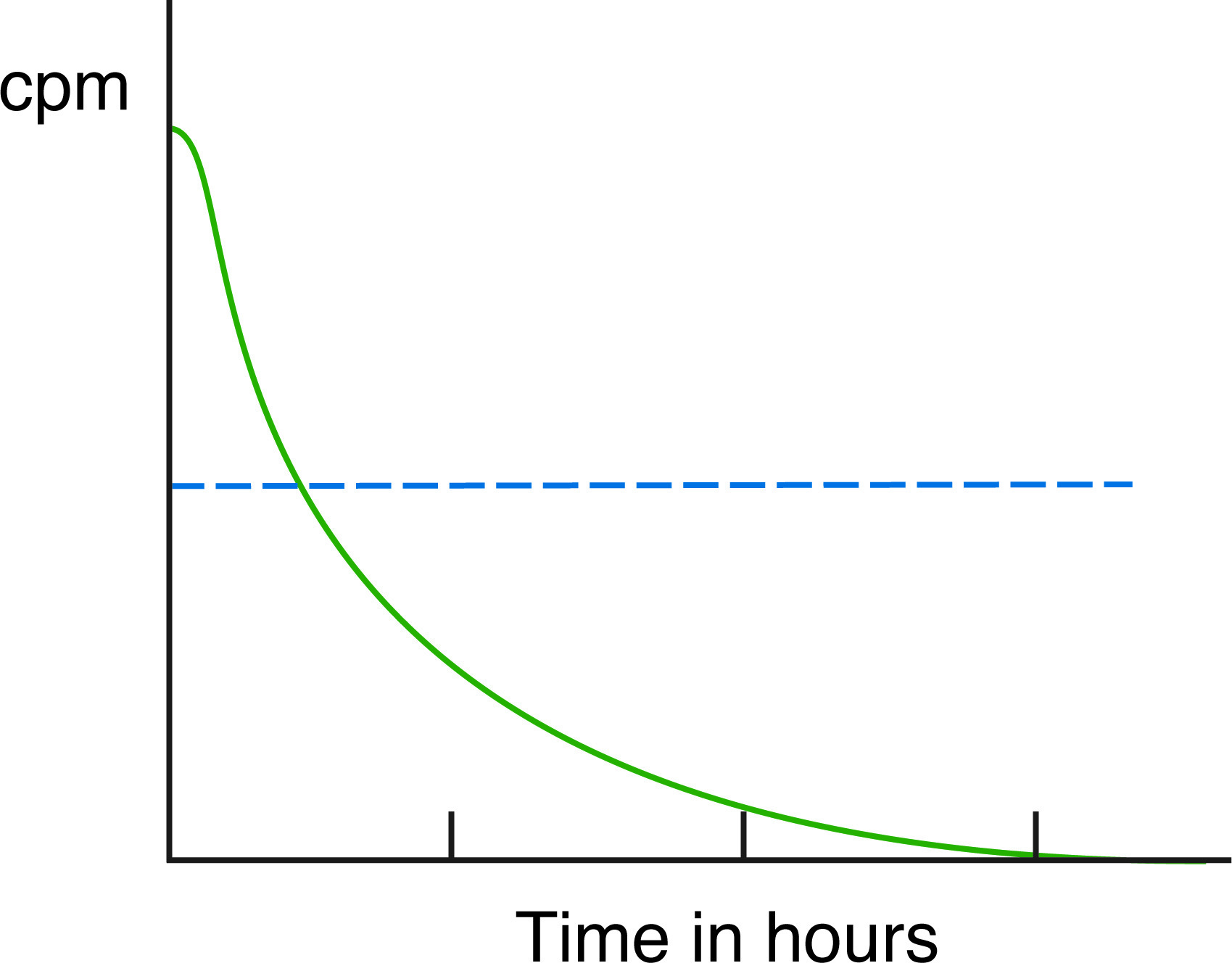Fundamentals of Liquid Scintillation Counting
Chemiluminescence and Static Electricity
Another commonly encountered artifact is chemiluminescence. This is caused by any chemical reaction which generates an excited product molecule, which decays to emit light. These reactions generate only a single photon, which may be quenched, or may reach the counter to register as a low energy emission event.
Such reactions can generate 105-106 cpm, skewing both total cpm data and counts ratio information. Chemiluminescence is generally diagnosed by counting the samples twice with a period of about an hour between counts. As the chemiluminescent reaction consumes its substrate, the rate of photon production decreases noticeably over an hour, and will usually decrease to zero over the course of 2-24 hours. By contrast, even a short-lived isotope like 32P will decrease its emissions by only 5% over 24 hours.

Many scintillation counters use coincidence counting to eliminate counts due to chemiluminescence. This system uses two photomultiplier tubes, generally mounted opposite each other. Because chemiluminescence only generates one photon at a time, only one photomultiplier tube will be activated. In contrast, the burst of photons from a genuine decay event will activate both photomultiplier tubes. Coincidence counting eliminates those emission events which do not appear at both photomultiplier tubes, thus eliminating chemiluminescence counts. However, coincidence counting will also cause some low energy emission events to be missed.
A further source of spurious counts is static electricity. The energy from a static electric buildup can be released as a burst of light from the cocktail. In dry environments, with plastic vials and latex gloves, high levels of static can build up, sufficient to give 104 cpm or higher from an affected sample. Static is the likely cause if counts from an individual sample vary unpredictably from one measurement to the next. Static can be minimized by wiping the vials with a wet paper towel (water dissipates the static) or by wiping with an antistatic laundry dryer sheet.
NEXT TOPIC: Waste Disposal Issues in Scintillation Counting
